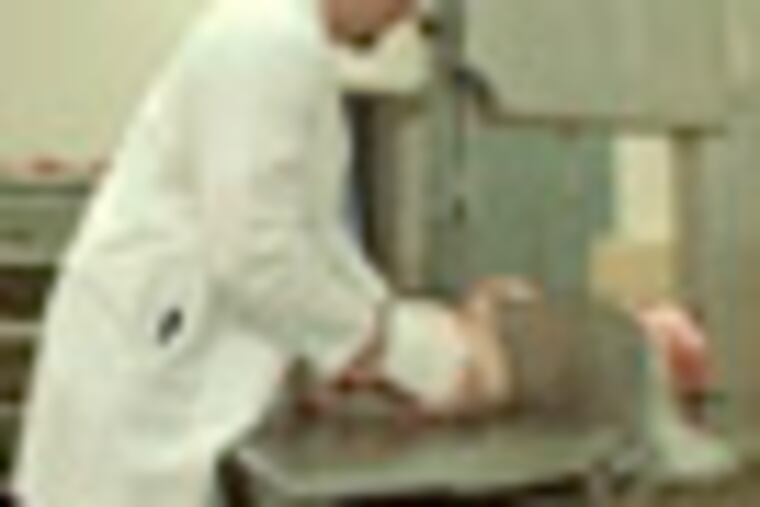To become a vet, student first has to learn 'Meats'

For Sarah Taubenberger, it sounded like buckets of blood hitting the floor.
She hadn't quite prepared herself to watch as the pig's throat was slit.
Taubenberger wants to be a vet. She loves animals and she was a member of 4-H as a child growing up in Philadelphia.
Now a junior majoring in animal science at Penn State, she is required to take a class called AN SC 208: Animal Products Technology Laboratory -- commonly referred to as "Meats Lab" by students taking the course.
The reality of how food reaches the table
In the second lab of the semester, Taubenberger and her classmates watched the process of slaughtering a pig from start to finish.
"I'm really OK with the whole idea that we slaughter animals and that the process happens," she said. "But I think it's a very different thing seeing it happen firsthand … smelling it and then seeing the blood like that … it's just a lot. So it was very overwhelming."
The smell, Taubenberger said, got to her. She didn't like the class.
And she hadn't known anyone who had taken the class before her, so she had no idea what to expect.
"I thought it was gonna do a lot with meat – that's all," Taubenberger said. "That's all, really. That's all I had to know."
The pig slaughter was weird, she said.
But most of what students learned in class wasn't about the slaughter – it was about processing meat, Taubenberger said. They did labs on packaging, tenderization practices and marinades.
Meat processed in the lab is sold from 9:30 a.m. to 3 p.m. most Fridays, according to Penn State's College of Agricultural Sciences Web site. Though Taubenberger has never been to a sale, she's heard there are lines down the street on football weekends. And the meat she's sampled in class has been good, she said.
Taubenberger finally warmed up to the course after a lab in which students made omelets and ate them. Their last two labs were in the Berkey Creamery so they could learn about how ice cream is made.
And looking back on it, Taubenberger gained a greater appreciation for where her food comes from. She now knows how to tell a good piece of meat from a bad piece of meat. She knows how long she can store food, at what temperature to store it, how to cook it and how to prepare it.
The lab was also designed so students could determine their own level of involvement in each lesson.
Taubenberger jokes that she still has nightmares about the pig slaughter. But she says she understands why animal sciences majors have to take it. And if other students are curious about the origin of their food – and want to eat food in class – they might want to consider taking "Meats."